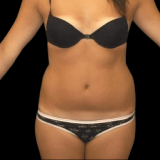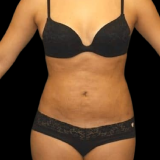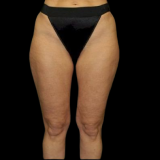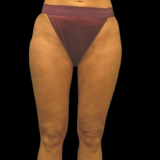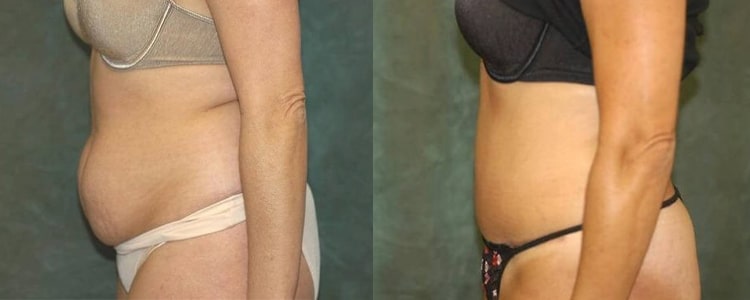Contents
Introduction
If you’re considering plastic surgery abdominoplasty, commonly known as a tummy tuck, you’re not alone. This procedure is designed to flatten and smooth the stomach area by removing excess fat and skin and tightening the abdominal muscles.
Quick Snapshot:
– Purpose: Removes excess skin and fat, tightens muscles.
– Ideal For: Post-pregnancy, significant weight loss, or aesthetic improvement.
– Types: Mini, standard, and extended abdominoplasty.
A tummy tuck can be life-changing for many, helping to restore confidence and achieve a more contoured abdominal profile. It’s a popular choice for those who’ve experienced significant weight changes or pregnancies that leave the abdomen area with loose skin and weakened muscles.
By understanding the abdominoplasty procedure, you can make an informed decision. Read on to learn more about preparation, the actual surgery, and post-operative care.
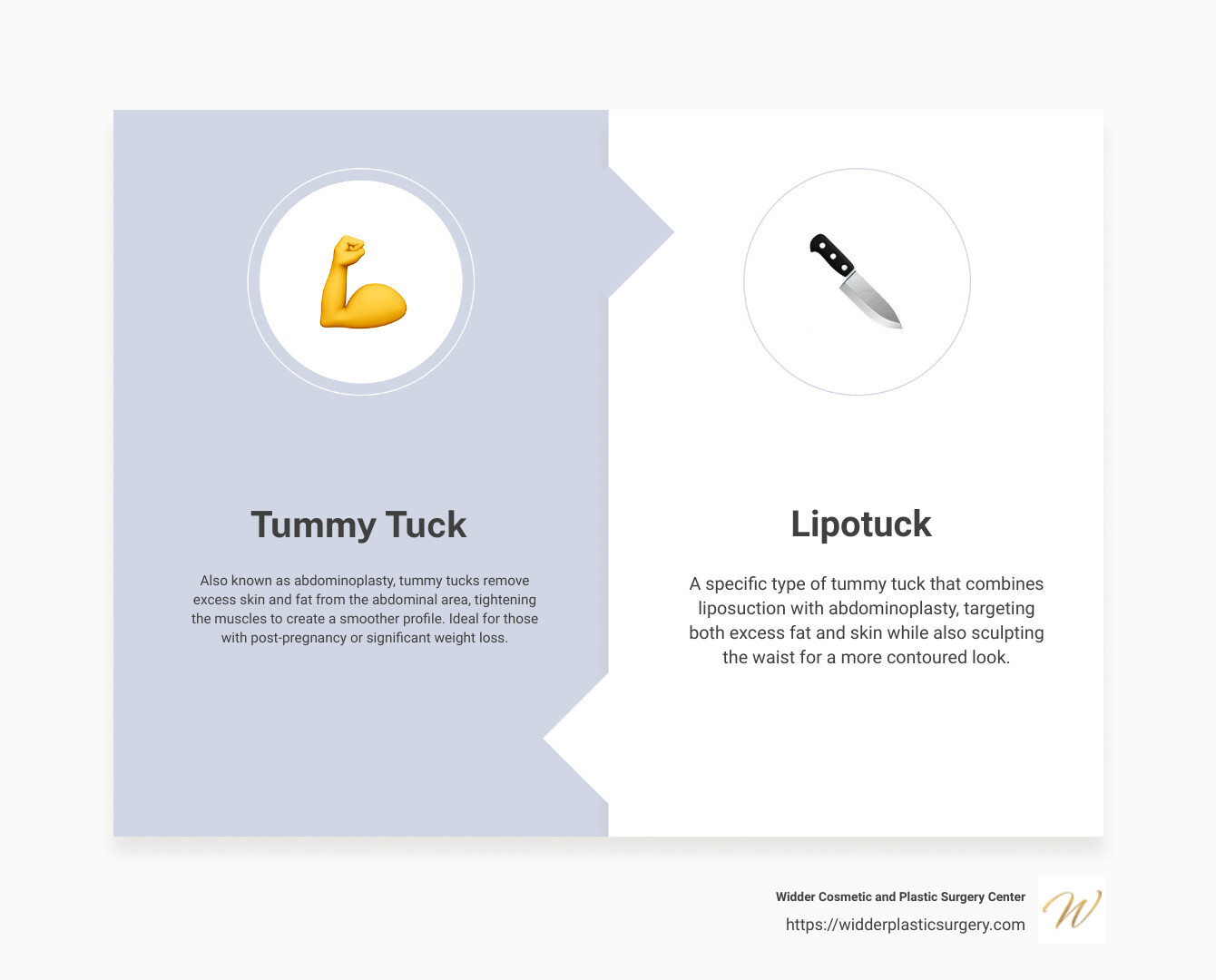
Understanding Abdominoplasty
When considering plastic surgery abdominoplasty, it’s important to understand the different terms and procedures involved. Let’s break down the key concepts: tummy tuck vs. abdominoplasty, lipotuck, and cosmetic surgery.
Tummy Tuck vs. Abdominoplasty
Tummy tuck and abdominoplasty are terms often used interchangeably. Both refer to the surgical procedure aimed at removing excess skin and fat from the abdomen and tightening the abdominal muscles.
Tummy tuck is the more colloquial term, while abdominoplasty is the technical term used by medical professionals.
- Tummy Tuck: Commonly used by patients and the general public.
- Abdominoplasty: Used in medical settings and among healthcare providers.
Lipotuck
A lipotuck is a combination of liposuction and abdominoplasty. This procedure is ideal for patients who have both excess fat and loose skin in the abdominal area.
- Liposuction: Removes excess fat from specific areas.
- Abdominoplasty: Removes excess skin and tightens muscles.
By combining these procedures, a lipotuck can achieve more comprehensive body contouring results.
Cosmetic Surgery
Cosmetic surgery encompasses a wide range of procedures aimed at enhancing appearance. Abdominoplasty is just one type of cosmetic surgery. Others include breast augmentation, rhinoplasty, and facelifts.
- Purpose: Improve aesthetic appeal and boost self-confidence.
- Popular Procedures: Tummy tuck, breast lift, liposuction.
Cosmetic surgery, including abdominoplasty, has become increasingly popular. According to NCBI, the rise in bariatric surgery has led to more patients seeking abdominoplasty to remove excess abdominal tissue after significant weight loss.
Understanding these terms and procedures can help you make informed decisions about your surgery. Next, we’ll discuss how to prepare for your abdominoplasty.
Preparing for Your Surgery
Preparing for abdominoplasty (tummy tuck) involves several important steps to ensure a successful procedure and smooth recovery. Here’s what you need to know:
Consultation
The first step is to schedule a consultation with your plastic surgeon. During this meeting, you will:
- Discuss your goals: Explain why you want the surgery and what you hope to achieve. This helps the surgeon understand your expectations.
- Medical history: Provide a detailed medical history, including any allergies, medications, and previous surgeries.
- Physical exam: The surgeon will examine your abdomen to determine the best treatment plan. They might also take photographs for your medical record.
Weight Goals
Maintaining a stable weight is crucial before undergoing a tummy tuck. Ideally, you should have a stable weight for at least 12 months. Significant weight fluctuations can affect the results of the surgery.
- Weight loss: If you are significantly overweight, your surgeon may recommend losing weight before the procedure.
- Post-surgery weight management: Continuing a healthy lifestyle after surgery helps maintain the results.
Pregnancy Plans
If you plan to become pregnant in the future, it’s best to postpone your tummy tuck. Pregnancy can stretch and separate the abdominal muscles, which might undo the results of the surgery. Discuss your family plans with your surgeon to decide the best timing for your procedure.
Combining Procedures
A tummy tuck can be combined with other cosmetic procedures for a more comprehensive enhancement, often referred to as a Mommy Makeover. Common procedures combined with abdominoplasty include:
- Breast augmentation: Enhances breast size and shape.
- Breast lift: Raises and firms the breasts.
- Liposuction: Removes excess fat from specific areas to contour your body.
Combining procedures can save time and reduce overall recovery periods. Your surgeon will help you decide which combination is right for you.
Mommy Makeover
A Mommy Makeover is a popular option for women looking to restore their pre-pregnancy bodies. It typically includes:
- Tummy tuck: Removes excess skin and tightens abdominal muscles.
- Breast procedures: Augmentation, lift, or both.
- Liposuction: Contours the body by removing stubborn fat deposits.
This comprehensive approach addresses multiple areas of concern in one surgery, leading to a more cohesive and satisfying result.

Practical Tips
- Stop smoking: Smoking decreases blood flow and can slow healing. Stop smoking before and during recovery.
- Avoid certain medications: Avoid aspirin, anti-inflammatory drugs, and herbal supplements that can increase bleeding.
- Arrange for help: Plan for someone to drive you home and stay with you for the first night after surgery.
By following these steps, you can ensure you are well-prepared for your abdominoplasty. Next, we’ll explain the procedure itself in detail.
The Procedure Explained
Excess Skin Removal
During plastic surgery abdominoplasty, the surgeon removes excess skin from the abdomen. This is often necessary after significant weight loss or pregnancy, where the skin has stretched beyond its ability to snap back. The surgeon makes a horizontal incision between the pubic hairline and belly button, then pulls down the upper abdominal skin like a window shade, trimming away the excess.
Muscle Tightening
A crucial part of the procedure is muscle tightening. The surgeon lifts the abdominal skin to access the underlying muscles. Weakened or separated muscles are then sutured together, creating a firmer abdominal wall. This step is essential for a flatter, more toned abdomen.
Waist Sculpting
For a more sculpted waistline, waist sculpting techniques are employed. This might include liposuction to remove fat from the flanks and upper thighs. The goal is to create smooth, natural contours that enhance the overall appearance.
Mini-Abdominoplasty
A mini-abdominoplasty is a less invasive option for those with minor skin and muscle laxity below the belly button. It involves a smaller incision and focuses on the lower abdomen. This procedure is ideal for patients at a healthy weight with good skin elasticity, often women who have had one or two children.
Full Abdominoplasty
A full abdominoplasty is more extensive. It involves a hip-to-hip incision and sometimes a second incision around the navel. This procedure addresses both the upper and lower abdomen, providing comprehensive results. The belly button is repositioned to ensure a natural look.
By understanding these steps, you can better prepare for what to expect during your abdominoplasty. Next, we’ll cover the recovery and aftercare process to ensure a smooth healing journey.
Recovery and Aftercare
Recovery Timeline
Recovery from abdominoplasty can take several weeks to months. Most people start feeling better after a couple of weeks, but full recovery can take up to 12 months. During this period, scars will fade, and swelling will reduce gradually.
Post-Operative Care
After surgery, you’ll feel tired and sore. Your healthcare provider will prescribe pain relievers to manage discomfort. It’s crucial to follow your surgeon’s instructions for caring for your incision and changing dressings. Keeping the incision clean and dry helps prevent infections.
Activity Restrictions
For the first few weeks, avoid strenuous activities like heavy lifting and intense workouts. Light activities, such as walking, are encouraged to improve blood flow and reduce the risk of blood clots. Gradually increase your activity level as you feel more comfortable.
Scar Care
Scarring is a natural part of the healing process. Over time, scars will fade and become less noticeable. Using recommended products like silicone sheets or gels can help improve the appearance of scars. Always consult your surgeon before starting any scar treatment.
Tummy Tuck Recovery
During the first week, it’s normal to feel discomfort. Many patients report feeling more like themselves after a couple of weeks. Bruising and numbness are common. You may feel a tightness or pulling sensation around your abdomen as you heal. This will go away.
If you notice complications or experience severe pain, bleeding, or swelling, contact your healthcare provider immediately.
By following these tips and your surgeon’s advice, you can ensure a smoother recovery and enjoy the best possible results from your plastic surgery abdominoplasty.
Next, we’ll address some frequently asked questions to help you further understand the abdominoplasty process.
Frequently Asked Questions about Abdominoplasty
What is the difference between a tummy tuck and abdominoplasty?
A tummy tuck and abdominoplasty are the same procedure. Both terms refer to a plastic surgery abdominoplasty that removes excess skin and fat from the abdomen and tightens the abdominal muscles. The goal is to create a firmer, flatter stomach.
How long does it take to fully recover from abdominoplasty surgery?
Recovery from an abdominoplasty can vary, but most people start feeling more like themselves after a couple of weeks. Complete healing can take up to 12 months. During this time, you’ll notice scars fading and swelling reducing gradually. Here’s a quick recovery timeline:
- First Week: Expect discomfort and soreness. Follow your surgeon’s instructions for pain management.
- Weeks 2-4: Bruising and numbness are common. You may feel tightness around your abdomen.
- Months 1-3: Swelling continues to decrease. You can start resuming light activities.
- Up to 12 Months: Scars continue to improve and fade.
What is the BMI cut off for abdominoplasty?
The ideal candidate for an abdominoplasty typically has a Body Mass Index (BMI) of 30 or less. Higher BMIs can increase the risk of complications and affect the results of the surgery. Always consult your surgeon to determine if you are a suitable candidate based on your overall health and body composition.
Conclusion
Achieving Your Goals with Widder Cosmetic and Plastic Surgery Center
At Widder Cosmetic and Plastic Surgery Center, we understand that choosing to undergo plastic surgery abdominoplasty is a significant decision. Our goal is to help you achieve the flat, firm, and aesthetically pleasing abdomen you desire.
Our board-certified plastic surgeon, Dr. Shlomo Widder, brings over 30 years of experience to each procedure. We are dedicated to providing a compassionate and personalized approach from the initial consultation through your recovery period.
Why Choose Us?
- Expertise: Dr. Widder’s extensive experience ensures high-quality results tailored to your unique needs.
- Comprehensive Care: We offer a range of procedures, including full and mini-abdominoplasties, to suit different requirements.
- Patient-Centric: Your safety, comfort, and satisfaction are our top priorities. We provide detailed pre-operative and post-operative guidance to ensure the best possible outcomes.
Get Started Today
If you’re ready to take the next step towards a more confident you, we invite you to schedule a consultation with Dr. Widder. During this meeting, we will discuss your goals, assess your needs, and provide you with a personalized plan.
Visit our Tummy Tuck Abdominoplasty page to learn more and book your consultation.
Your journey to a flatter, more confident you begins here, and we’re here to support you every step of the way.
